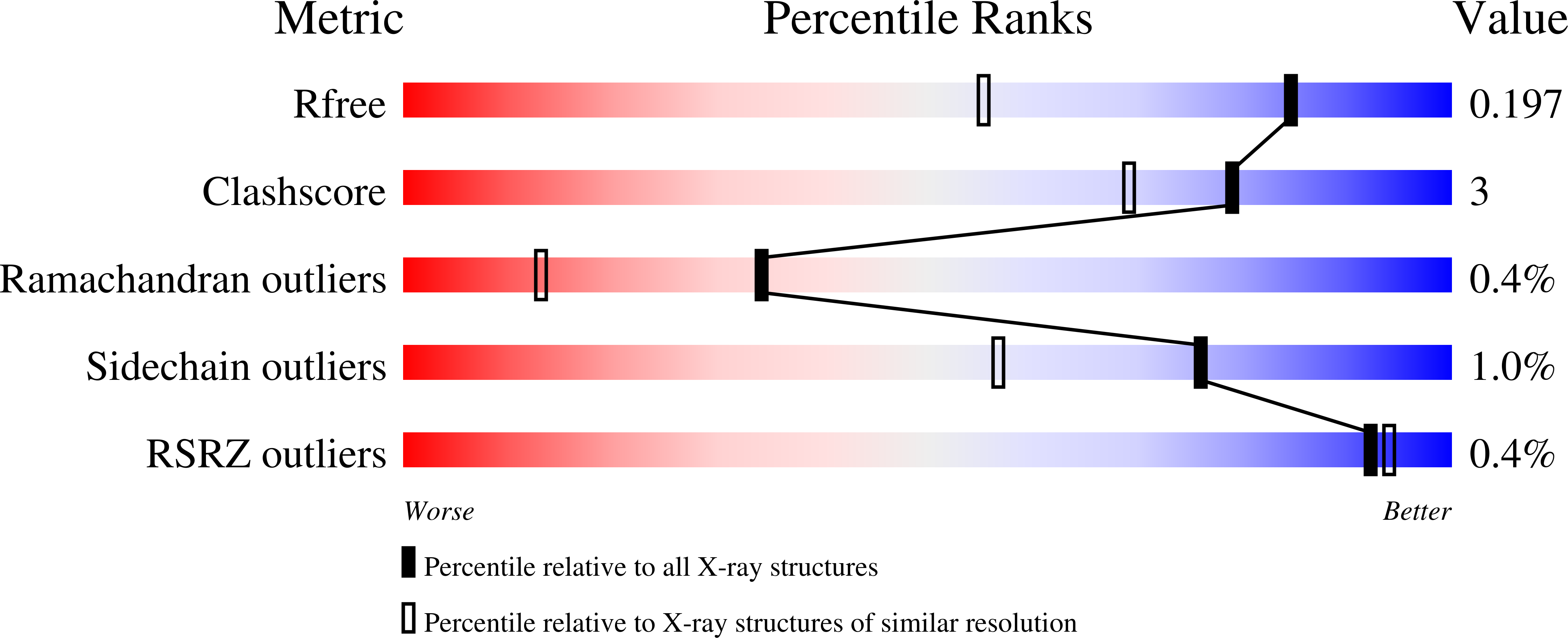Network of epistatic interactions in an enzyme active site revealed by large-scale deep mutational scanning.
Judge, A., Sankaran, B., Hu, L., Palaniappan, M., Birgy, A., Prasad, B.V.V., Palzkill, T.(2024) Proc Natl Acad Sci U S A 121: e2313513121-e2313513121
- PubMed: 38483989
- DOI: https://doi.org/10.1073/pnas.2313513121
- Primary Citation of Related Structures:
8SJ3 - PubMed Abstract:
Cooperative interactions between amino acids are critical for protein function. A genetic reflection of cooperativity is epistasis, which is when a change in the amino acid at one position changes the sequence requirements at another position. To assess epistasis within an enzyme active site, we utilized CTX-M β-lactamase as a model system. CTX-M hydrolyzes β-lactam antibiotics to provide antibiotic resistance, allowing a simple functional selection for rapid sorting of modified enzymes. We created all pairwise mutations across 17 active site positions in the β-lactamase enzyme and quantitated the function of variants against two β-lactam antibiotics using next-generation sequencing. Context-dependent sequence requirements were determined by comparing the antibiotic resistance function of double mutations across the CTX-M active site to their predicted function based on the constituent single mutations, revealing both positive epistasis (synergistic interactions) and negative epistasis (antagonistic interactions) between amino acid substitutions. The resulting trends demonstrate that positive epistasis is present throughout the active site, that epistasis between residues is mediated through substrate interactions, and that residues more tolerant to substitutions serve as generic compensators which are responsible for many cases of positive epistasis. Additionally, we show that a key catalytic residue (Glu166) is amenable to compensatory mutations, and we characterize one such double mutant (E166Y/N170G) that acts by an altered catalytic mechanism. These findings shed light on the unique biochemical factors that drive epistasis within an enzyme active site and will inform enzyme engineering efforts by bridging the gap between amino acid sequence and catalytic function.
Organizational Affiliation:
Verna and Marrs McLean Department of Biochemistry and Molecular Pharmacology, Baylor College of Medicine, Houston, TX 77030.














